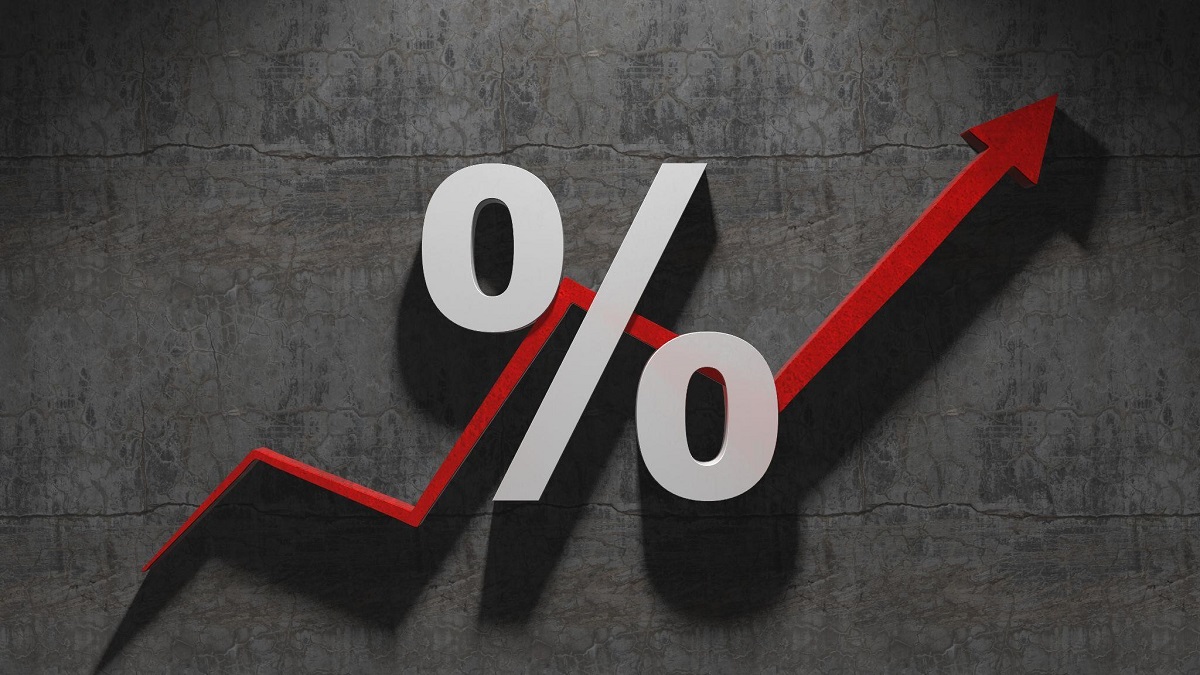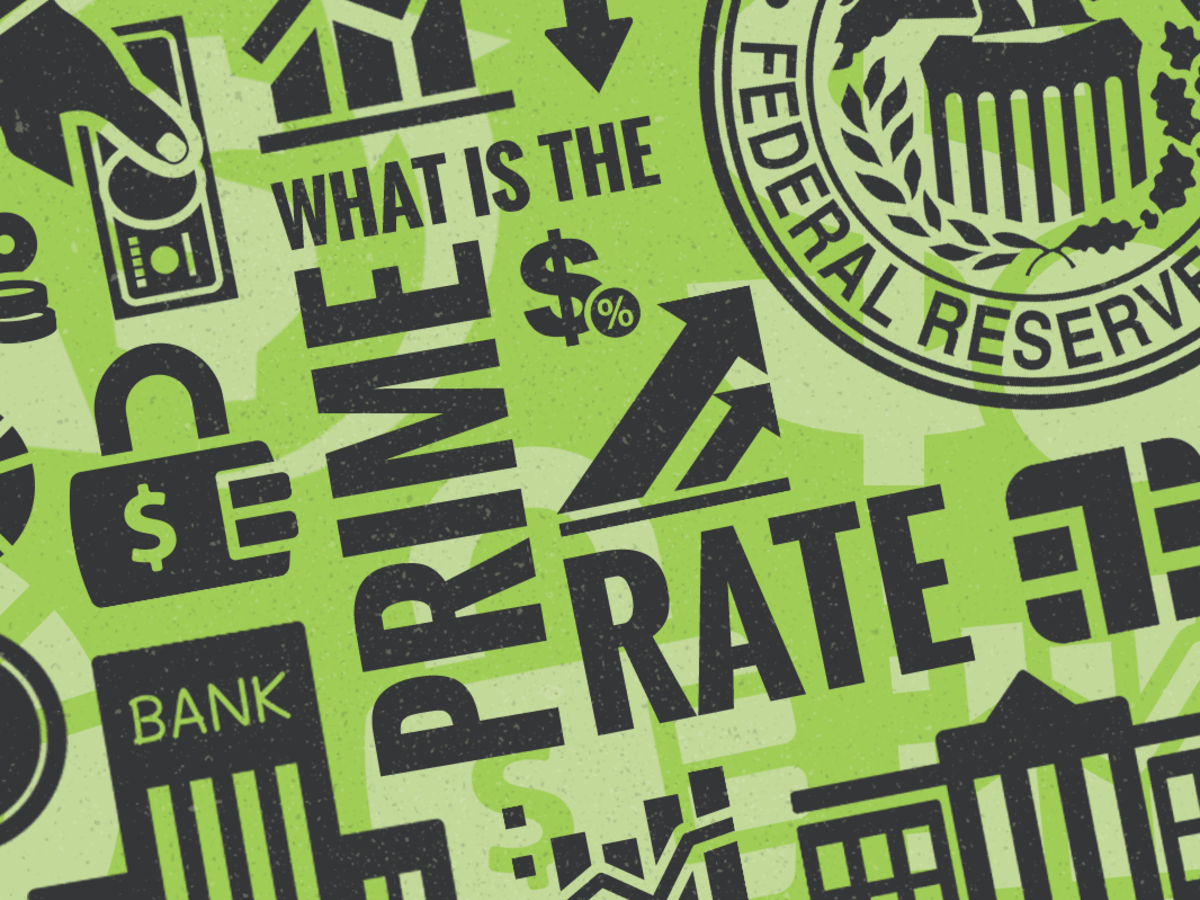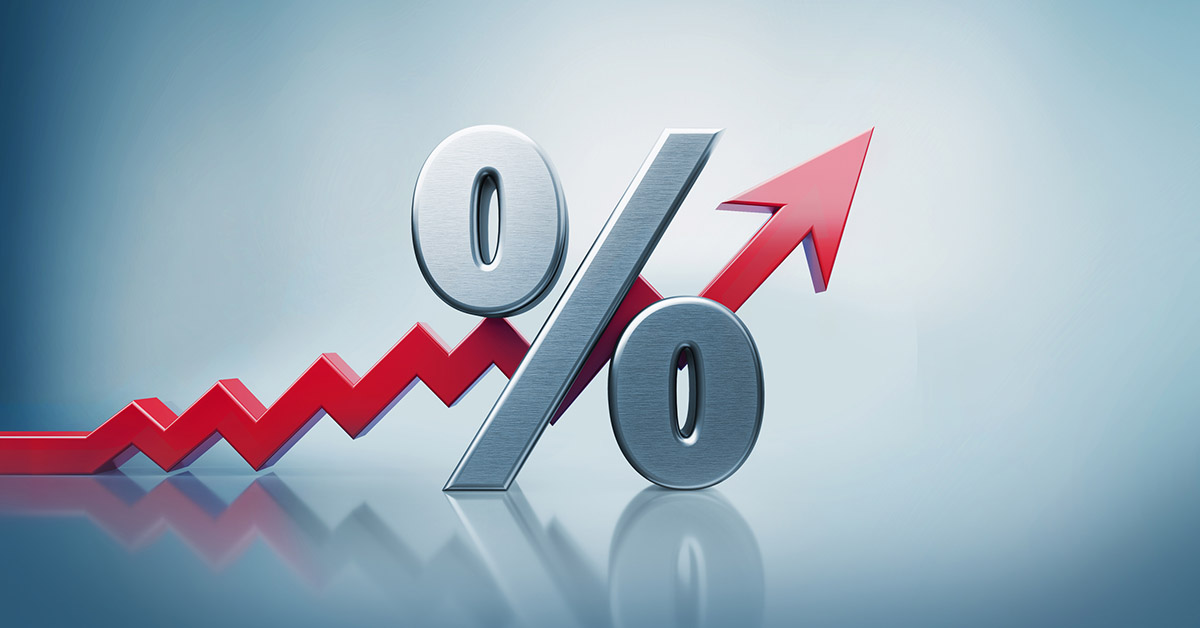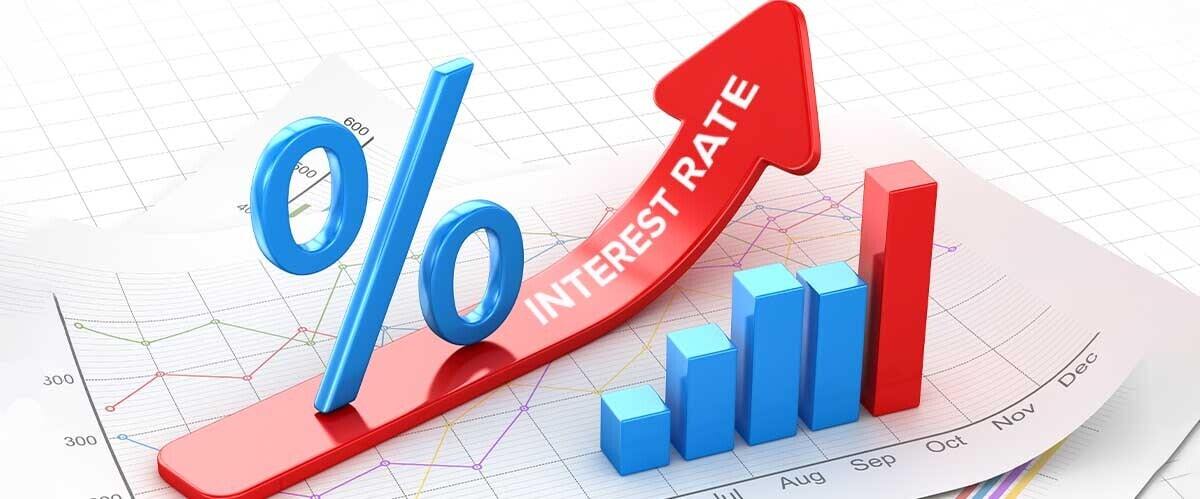Introduction
Welcome to the world of lending rates, a crucial component of the global financial landscape. Whether you’re a borrower or an investor, understanding the concept of lending rates is essential for making informed financial decisions. In this article, we will delve into the intricacies of lending rates, exploring their definition, factors affecting them, different types, and their significance in the economy.
Lending rates play a fundamental role in the borrowing and lending activities carried out by financial institutions, such as banks and credit unions. These rates determine the cost of borrowing money and can significantly impact the profitability of both individuals and businesses. Therefore, it’s no surprise that lending rates are closely monitored and influenced by various economic factors and government policies.
Throughout this article, we will uncover the mechanics behind lending rates, examining how they are determined, and the influence of central banks in setting them. We will also discuss the implications of lending rates on borrowers and the wider economy. By the end of this read, you will have a solid understanding of the importance and impact of lending rates.
So, let’s embark on this journey to unravel the mystery of lending rates and gain insights that will empower you to make informed financial decisions.
Definition of Lending Rate
Before delving deeper into the complexities of lending rates, let’s start with a clear definition. The lending rate, also known as the borrowing rate or interest rate, is the percentage charged by financial institutions to borrowers for the use of borrowed funds. It represents the cost of borrowing money and plays a vital role in determining the affordability and attractiveness of loans.
Financial institutions, such as banks and credit unions, offer various types of loans to individuals and businesses. These loans can be for purposes like purchasing a home, starting a business, or financing personal expenses. The lending rate is the additional amount charged by the lender on top of the principal amount loaned, serving as compensation for the risk and opportunity cost incurred by the lender.
The lending rate can be either fixed or variable. A fixed lending rate remains unchanged for the entire duration of the loan, providing borrowers with predictable monthly payments. On the other hand, a variable lending rate fluctuates depending on market conditions, typically tied to a benchmark rate such as the prime rate.
The lending rate is expressed as an annual percentage rate (APR), which allows borrowers to compare different loan offers and assess the overall cost of borrowing. It includes not only the interest charged but also any additional fees or charges associated with the loan. It’s important to note that the lending rate is not the only factor to consider when evaluating loan options; other factors such as loan terms, repayment plans, and loan eligibility criteria should also be taken into account.
The lending rate is influenced by a variety of factors, including macroeconomic conditions, government policies, central bank decisions, and the borrower’s creditworthiness. These factors play a crucial role in determining the risk and profitability associated with lending money, ultimately impacting the lending rate offered to borrowers.
Now that we have a clear understanding of the definition of lending rate, let’s explore the various factors that can affect these rates and ultimately influence borrowing costs.
Factors Affecting Lending Rates
Several factors come into play when determining lending rates. Understanding these factors is crucial for borrowers and investors alike as they impact the cost of borrowing and the profitability of lending institutions. Let’s explore some of the key factors that influence lending rates:
- Economic Conditions: The overall state of the economy, including factors such as inflation, GDP growth, and unemployment rates, can significantly impact lending rates. During times of economic expansion and low inflation, lending rates tend to be lower as there is increased demand for loans. Conversely, during economic downturns, lending rates may increase to compensate for higher levels of risk.
- Central Bank Policies: Central banks, such as the Federal Reserve in the United States or the European Central Bank in the Eurozone, play a crucial role in influencing lending rates. By adjusting the benchmark interest rates, central banks can impact the cost of borrowing for financial institutions. Lowering the benchmark rate encourages borrowing and stimulates economic activity, while raising it can help control inflation and prevent excessive credit growth.
- Government Regulatory Policies: Governments often implement policies and regulations aimed at maintaining stability and managing risk within the financial system. These regulations, such as capital adequacy requirements and restrictions on interest rates, can directly impact lending rates. Stricter regulations can lead to higher lending rates as financial institutions strive to meet the new requirements.
- Creditworthiness of Borrowers: The creditworthiness of borrowers, including their credit score and financial history, plays a significant role in determining the lending rate. Borrowers with higher credit scores and lower risk profiles are more likely to be offered lower lending rates, as lenders perceive them as less likely to default on their loans.
- Market Competition: Competition among financial institutions can drive down lending rates as lenders strive to attract borrowers. When there is a high level of competition in the lending market, lenders may offer more favorable rates, terms, and conditions to entice borrowers. Conversely, in a less competitive market, lenders have more pricing power and can charge higher lending rates.
- Financial Institution’s Cost of Funds: The cost at which financial institutions themselves obtain funding also affects lending rates. If a financial institution has higher costs to obtain funds, such as higher interest rates on deposits or wholesale borrowing, they may pass on those costs to borrowers through higher lending rates.
These are just a few key factors influencing lending rates. It’s important to note that the relative importance of each factor may vary depending on the specific circumstances and market conditions. By considering these factors, borrowers and lenders can make informed decisions regarding loan options and investment strategies.
Types of Lending Rates
When it comes to lending rates, there are several types that borrowers and investors should be aware of. Each type has its characteristics and purposes, catering to different financial needs. Let’s explore some of the most common types of lending rates:
- Prime Rate: The prime rate is the benchmark lending rate set by major commercial banks for their most creditworthy customers. It serves as the reference rate for many loans, such as mortgages, business loans, and personal lines of credit. The prime rate is influenced by factors such as the central bank’s policies and market conditions and is usually lower than other lending rates.
- Fixed Rate: A fixed-rate loan has a lending rate that remains unchanged throughout the loan term. This type of rate provides borrowers with stability and predictable monthly payments, making it easier to budget and plan their finances. However, fixed-rate loans may have slightly higher rates compared to variable-rate loans as they offer borrowers long-term rate protection.
- Variable Rate: A variable-rate loan has a lending rate that can fluctuate over time. It is usually tied to a predetermined benchmark rate, such as the prime rate or the London Interbank Offered Rate (LIBOR). When the benchmark rate changes, the lending rate adjusts accordingly. Variable-rate loans offer the potential for lower rates initially, but borrowers bear the risk of potentially higher rates in the future.
- Discounted rate: A discounted rate is a temporary reduction in the lending rate offered by the lender. It is typically applied for an introductory period, usually a few months or years, after which the rate reverts to the standard lending rate. Discounted rates can be advantageous for borrowers who want to take advantage of lower rates initially but need to be mindful of future rate adjustments.
- Adjustable Rate: An adjustable-rate loan, also known as a floating-rate loan, has a lending rate that varies based on specific factors outlined in the loan agreement. These factors can include changes in the market interest rates, inflation rates, or a reference rate like the LIBOR. Adjustable-rate loans can offer initial lower rates, making them attractive for certain borrowers such as those planning to sell or refinance the property before the rate adjusts.
- Penal Interest Rate: A penal interest rate, also called a late payment interest rate, is applied when a borrower fails to make timely loan repayments. This rate is usually higher than the standard lending rate and acts as a penalty to encourage borrowers to make payments promptly. Penal interest rates serve as a deterrent against late or missed payments and compensate lenders for the increased risk involved.
Understanding the different types of lending rates allows borrowers to choose the most suitable loan option for their specific needs and financial circumstances. It’s important to carefully consider the advantages and disadvantages of each type before making a decision.
Importance of Lending Rates
The importance of lending rates cannot be overstated, as they have far-reaching implications for both borrowers and the overall economy. Here are some key reasons why lending rates are crucial:
- Cost of Borrowing: Lending rates directly impact the cost of borrowing for individuals, businesses, and governments. Lower lending rates make borrowing more affordable, allowing businesses to invest in expansion and individuals to make necessary purchases, such as buying a home or financing education. Conversely, higher lending rates increase borrowing costs, potentially limiting economic growth and consumer spending.
- Incentives for Savings and Investments: Lending rates also play a role in incentivizing savings and investments. Higher lending rates encourage individuals and businesses to save more as they offer better returns on their savings. Banks and financial institutions can then utilize these savings to provide loans to borrowers, contributing to economic growth and entrepreneurship.
- Monetary Policy Management: Central banks use lending rates as a tool to manage monetary policy and control inflation. By adjusting the benchmark interest rate, central banks can influence borrowing costs, impacting consumer spending, investment, and business activity. Lowering rates stimulates economic growth, while higher rates help curb inflationary pressures.
- Profitability of Financial Institutions: For financial institutions, lending rates directly affect their profitability. The spread between the lending rates they charge borrowers and the interest rates they offer on deposits and other funding sources contributes to their overall revenue. Setting lending rates at appropriate levels is crucial for financial institutions to ensure sustainable profitability while managing risks.
- Impact on Exchange Rates: Lending rates can indirectly impact exchange rates in international markets. Higher rates in one country can attract foreign investors seeking higher returns, leading to an increased demand for that country’s currency. This can potentially strengthen the domestic currency and impact international trade and competitiveness.
- Stability in the Financial System: Lending rates also contribute to maintaining stability within the financial system. By carefully managing lending rates, regulators and central banks aim to prevent excessive credit growth, speculation, and bubbles that can lead to financial crises. Appropriate lending rates encourage responsible lending practices and help avoid systemic risks.
The importance of lending rates extends beyond individual borrowers and financial institutions. They are a powerful tool that central banks and policymakers utilize to regulate economic growth, manage inflation, and ensure stability in the financial system. A careful balance of lending rates benefits both borrowers and lenders, contributing to a healthy and thriving economy.
How Lending Rates are Determined
The determination of lending rates involves a complex interplay of various factors and considerations. Financial institutions carefully assess multiple elements to set lending rates that align with their profitability objectives and risk management strategies. Here’s an overview of how lending rates are determined:
- Cost of Funds: Financial institutions consider their own cost of funds when setting lending rates. This includes the interest rates they pay on deposits, borrowings from other financial institutions, and capital market funding. By analyzing the cost of funds, lenders ensure that they earn a margin to cover their operating expenses and generate a profit on the loans they extend.
- Profit Margin: Lenders factor in their desired profit margin when determining lending rates. This margin ensures that financial institutions cover not only their costs but also account for the risks associated with lending. Profit margins vary depending on factors such as the borrower’s creditworthiness, the loan’s purpose, and prevailing market conditions.
- Loan Duration and Repayment Period: The duration of the loan and the agreed repayment period are taken into consideration when setting lending rates. Longer-term loans and longer repayment periods may attract higher interest rates due to the increased risk for lenders. Short-term loans or loans with shorter repayment periods may have lower interest rates as they pose less risk to lenders.
- Borrower’s Creditworthiness: The creditworthiness of the borrower plays a crucial role in determining the lending rate. Financial institutions assess the borrower’s credit history, credit score, income stability, and debt-to-income ratio. Borrowers with a strong credit profile and lower risk of default are more likely to be offered lower interest rates compared to those with higher risk profiles.
- Market Conditions: Lending rates are also influenced by prevailing market conditions. Factors such as the current economic climate, inflation rates, monetary policy decisions, and competition among lenders can all impact lending rates. When there is intense competition among financial institutions or when central banks lower benchmark interest rates to stimulate economic growth, lending rates tend to decrease.
- Loan Type and Purpose: Different types of loans and their specific purposes can affect lending rates. For example, mortgage rates may differ from personal loan rates due to variations in risk factors associated with each loan type. Lenders may offer more competitive rates for loans that contribute to economic growth, such as business loans or loans for sustainable investments.
Ultimately, the determination of lending rates involves a balance between the lender’s profitability objectives, the borrower’s risk profile, and the prevailing market dynamics. It’s important to note that lending rates can vary among financial institutions, and borrowers are encouraged to shop around and compare rates to ensure they secure the most favorable terms for their loan needs.
Role of Central Banks in Setting Lending Rates
Central banks play a crucial role in determining lending rates by influencing the benchmark interest rates within an economy. The actions and policies of central banks have a cascading effect on the overall lending landscape. Here’s a closer look at the role of central banks in setting lending rates:
- Monetary Policy: Central banks formulate and implement monetary policy to manage the overall economy. One of the key tools they use is adjusting the benchmark interest rates. By raising or lowering these rates, central banks have the ability to influence lending rates throughout the financial system, affecting borrowing costs for individuals, businesses, and governments.
- Stimulating Economic Growth: During periods of economic slowdown, central banks often lower the benchmark interest rates to stimulate borrowing and spending. Lower lending rates incentivize businesses and individuals to take loans for investment purposes, stimulating economic activity and supporting growth. This approach encourages higher consumption, increased investment, and job creation.
- Controlling Inflation: Central banks also use lending rates as a means to control inflation. When inflationary pressures rise, central banks may increase benchmark interest rates to curb excessive spending and prevent the economy from overheating. By raising lending rates, central banks aim to reduce borrowing and discourage excessive credit growth, which can help moderate inflationary pressures.
- Maintaining Financial Stability: Central banks have a mandate to maintain financial stability within the banking system. They monitor and regulate financial institutions to ensure the proper functioning of the financial sector. By setting lending rates, central banks can influence the risk-taking behavior of banks and safeguard against excessive lending or speculative practices that could lead to financial instability.
- Market Guidance: Central banks also provide guidance and signals to financial markets and participants through their actions and communications. Changes in benchmark interest rates or remarks from central bank officials can impact market expectations and influence lending rates. Financial institutions often align their lending rates in response to these signals, ensuring consistency with the central bank’s monetary policy goals.
- International Economic Factors: Central banks consider international economic factors when setting monetary policy and benchmark interest rates. They assess global economic conditions, exchange rates, and developments in other major economies. This global perspective allows central banks to establish lending rates that take into account the interconnectedness of financial markets and prevent excessive volatility and external shocks.
The role of central banks in setting lending rates highlights their responsibility to maintain price stability, promote economic growth, and ensure the stability of the financial system. By establishing benchmark interest rates and utilizing other monetary policy tools, central banks exert significant influence over lending rates, thereby shaping the borrowing and lending activities within an economy.
Impact of Lending Rates on Borrowers and the Economy
The lending rates set by financial institutions and influenced by central banks have a profound impact on borrowers and the broader economy. Here’s a closer look at how lending rates affect both borrowers and the overall economic landscape:
- Borrowing Costs: The most direct impact of lending rates is on the cost of borrowing for individuals, businesses, and governments. Lower lending rates make loans more affordable, reducing the interest expense for borrowers. This encourages borrowing for various purposes, such as purchasing homes, financing education, or investing in business expansion. On the other hand, higher lending rates increase borrowing costs, making loans more expensive and potentially limiting access to credit.
- Consumer Spending: Lending rates significantly influence consumer spending patterns. Lower borrowing costs due to favorable lending rates incentivize consumers to take out loans for big-ticket purchases like homes and automobiles. This increased spending stimulates demand, which can have a positive impact on the overall economy by driving business activity and job creation.
- Business Investment: Lending rates also play a crucial role in shaping business investment decisions. Lower lending rates make it more affordable for businesses to access funding for expansion, research and development, or acquiring new equipment. Reduced borrowing costs can encourage entrepreneurs to make investment decisions with potentially higher returns, fueling economic growth and innovation.
- Housing Market: Lending rates have a significant impact on the housing market. Lower rates make mortgages more affordable, leading to increased demand for homes. This can drive up housing prices and contribute to a booming real estate market. On the other hand, higher lending rates can dampen demand for housing, leading to a slowdown in the housing market and potentially causing prices to stabilize or decrease.
- Inflation and Monetary Policy: The lending rates set by central banks have a direct influence on inflation. When central banks raise interest rates to combat inflationary pressures, borrowing costs increase. Higher lending rates can lead to reduced consumer spending, moderating demand and potentially curbing inflation. Conversely, when central banks lower interest rates to stimulate economic growth, borrowing costs decrease, encouraging spending and potentially leading to an increase in inflation.
- Savings and Investments: Lending rates also impact savings and investment decisions. Higher lending rates can incentivize individuals to save more, as they can earn higher returns on their savings. This can contribute to capital formation and provide funds for lending by financial institutions. Conversely, lower lending rates can discourage savings, as returns on savings may be relatively low compared to borrowing costs. This can influence investment decisions as individuals seek alternative investment opportunities with potentially higher returns.
The impact of lending rates on borrowers and the economy highlights the complex relationship between borrowing costs, consumer spending, business investment, and monetary policy. These interconnections underscore the importance of carefully monitoring lending rates and ensuring that they are set in a way that balances the needs of borrowers and the broader economic considerations.
Conclusion
Lending rates play a pivotal role in the world of finance, affecting borrowers, lenders, and the overall economy. By understanding the definition of lending rates, the factors influencing them, and their various types, individuals and businesses can make informed decisions when it comes to borrowing and investing. The importance of lending rates cannot be overstated, as they determine the cost of borrowing, incentivize savings and investments, and contribute to monetary policy management.
The determination of lending rates involves a careful analysis of factors such as economic conditions, central bank policies, creditworthiness of borrowers, market competition, and the cost of funds for financial institutions. Central banks, as key players in the financial system, have a significant impact on lending rates through their decisions regarding benchmark interest rates.
The impact of lending rates extends beyond individual borrowers and lenders. They have far-reaching consequences on consumer spending, business investment, the housing market, inflation, and the overall stability of the financial system. Lower lending rates can stimulate economic growth, while higher rates can help control inflationary pressures. The relationship between lending rates, savings, and investments further underscores their role in shaping financial decision-making.
In conclusion, lending rates are crucial components of the financial landscape, influencing borrowing costs and driving economic activity. By staying informed about lending rates and their implications, individuals and businesses can navigate the borrowing and investing landscape effectively, making strategic decisions that align with their goals and financial well-being.

























